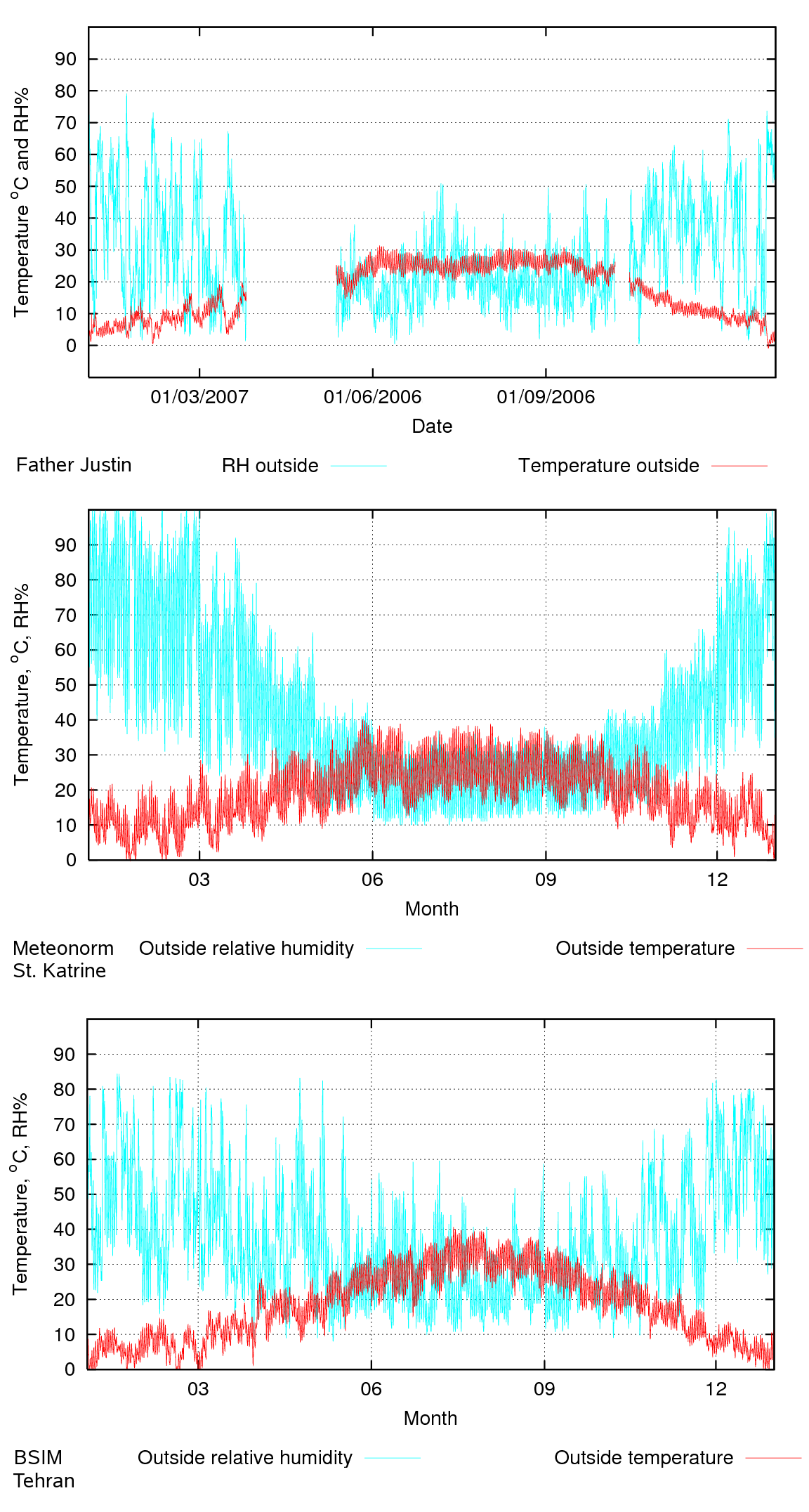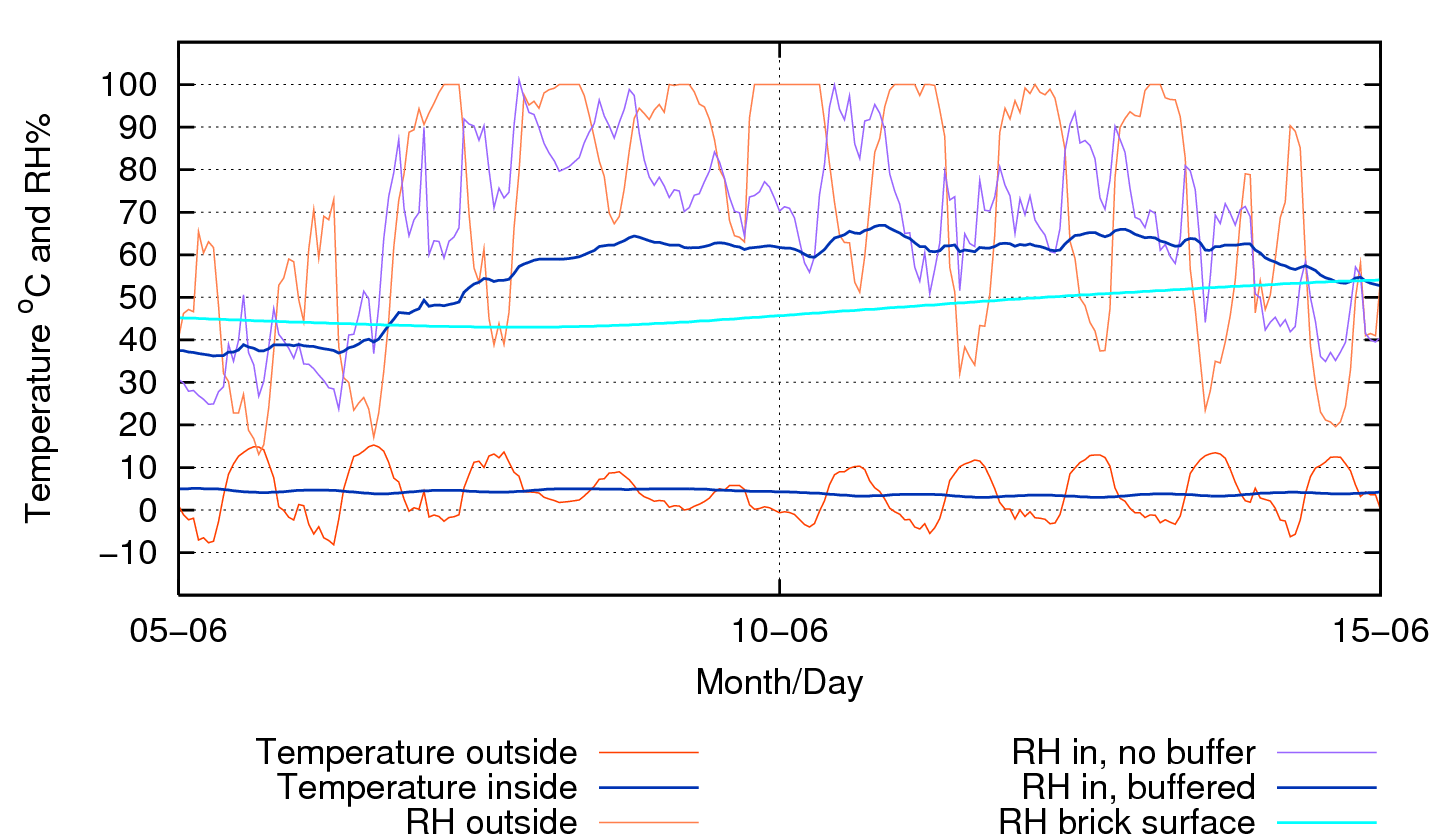
Energy efficient museum storageCopenhagen, 10 - 11 October 2013 Calculation tools and basic concepts Lectures (too many!) Cambridge, 15 October 2013 Paris-CRCC |
Reasons to be sceptical about climate dataBuilding climate simulations depend on accurate environmental data. This is surprisingly rare. Apart from errors in calibration there are huge gaps in the records from nearly all measurement sites. The databases of climates round the world use interpolation algorithms for filling in both time gaps and place gaps. They provide fictitious data for generic years rather than actual data for particular years. So the climate fed into the simulation program is several stages of calculation removed from the raw data. Behind the scenes, there is a 'weather engine' which uses climate statistics to generate a convincing hour by hour weather. Here are three climate records relevant to St Catherine's Monastery, Sinai. The first is definitely made on the spot, for a particular year (Father Justin)  The only peculiarity one can comment on is that the outside climate in the data from Father Justin came from a datalogger set under an arch leading to a courtyard. One can guess that the surrounding stone provided considerable thermal buffering, thus reducing the amplitude of the daily temperature cycle. The RH variation would also be reduced by the temperature buffering. The interpolation algorithms sometimes ignore significant but subtle phenomena which are relevant to the building designer. Here for example is real climate data from Tiwanaku in Bolivia. Disregard all but the outside temperature trace. Notice that it is unsymmetrical. The temperature gradient with time changes as the dew point is reached - indicating heavy dewfall. The generalised climate data usually fits the temperature to a sine curve and misses this important detail.  |